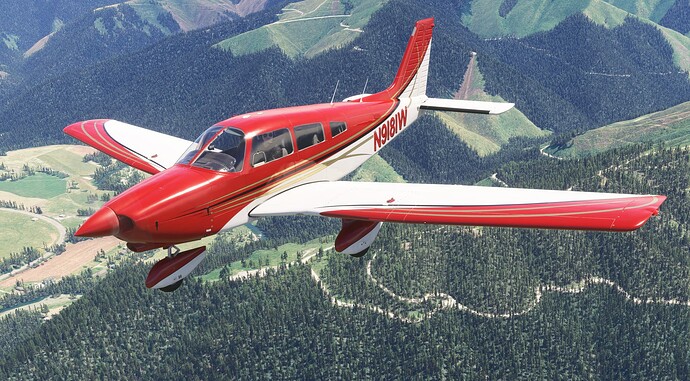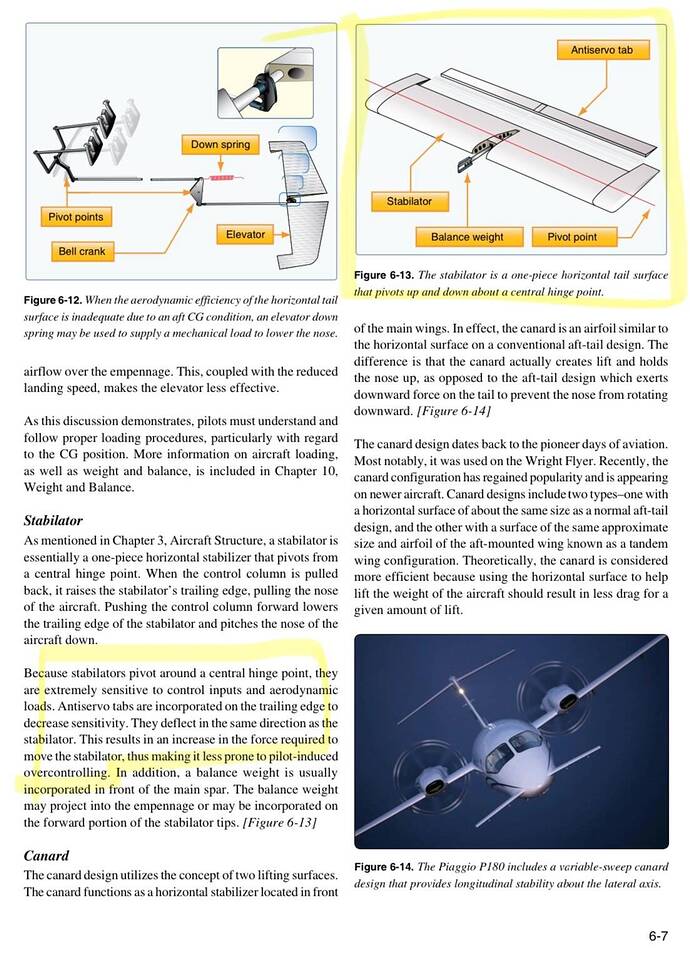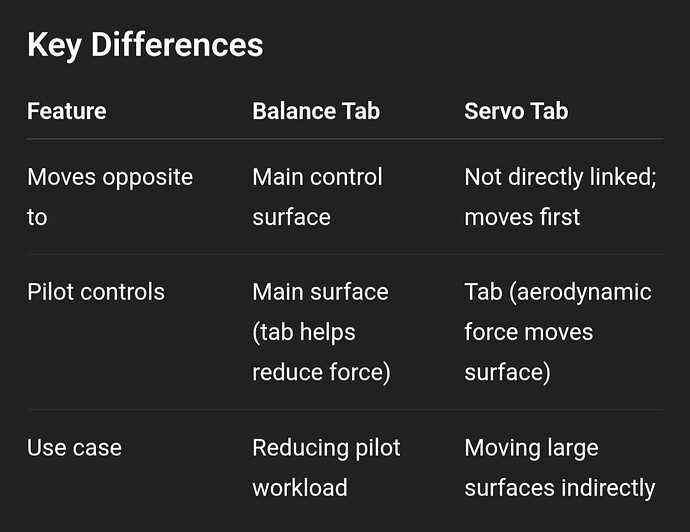I can not find this plane wherever I look in game!
I find P28 Arrow III and that´s the only Piper in my library or marketplace!
So where is it???
If you look u will find it, as I did in FREE Flight! ![]()
I made a cool red paint (red is my fav) for the Dakota
https://flightsim.to/file/94526/n9181w-for-carenado-piper-dakota-2024-only
Try asking the guy who did the TDS mod, he already has the 3D bezels so it’s easier than starting from scratch.
The bezels aren’t the same.
The JF Pipers are horrible to land. This one is actually more realistic in my opinion (~120 hours in real PA28s).
Do you use MSFS 2020 or the 2024?
What controllers do you have?
I guess the lack of the “seat of pants” feedback and real-life controllers (with their travel, resistance etc) plays a big role in how we percieve an aircraft behaviour in the sim vis-a-vis the real deal.
What exactly does it make a horrible experience for you?
Is it really acting in reverse or are you referring to the anti-balance tab moving visually in the same direction as the stabilator? The latter is actually correct behavior.
This aircraft is equipped with an all moving tailplane called a stabilator, to prevent overcontrolling it has an anti-balance tab which is designed to increase the control force rather than reducing it like on a conventional tailplane with an elevator.
Thanks TJTurner, that solved the problem for me as well. There is a bug where you have to set the mixture to full rich with your mouse or the plane won’t start
On Xbox, starting from cold and dark, none of the avionics and instruments turn on. The Garmins, fuel, transponder, AP unit all remain off. Only the “CTRL+E” shortcut turns them on.
Turning on the battery should also turn on all the instruments but it doesn’t.
Edit: Disregard the above, I found the avionics switch. Right side of the upper Garmin unit.
Yep! Also known as an anti-servo tab for anyone wanting to look into how they work.
Hmm is it though? With a servo tab the flight controls are usually either connected to the tab solely or to the tab and via a flexible connection (torsion tube or springs) to the stabilator.
That way the stabilator and tab move as one surface at low speed / aerodynamic force, and high speed / aerodynamic force only the tab is moved, the tab then moves the whole control surface.
That is the idea behind a servo-tab. An anti-servo tab would mean the control surface would move in opposite direction, I don’t know any use case for that.
I’m not 100% familiar with the piper, but I believe the flying controls don’t primarily control the tab, they primarily control the stabilator itself and the tab causes an increase in control force.
Edit: Googling this topic it seems the two terms are used interchangeably, which I don’t think is accurate. I have flown turboprops with pure servo tab controls, it is completely different than balance tabs ![]() .
.
Right out of chapter 6 of the PHAK (highlighting mine):
Matter of definition I guess, when I taught ATPL theory 10 years ago it was definitely explained differently.
Servo-tabs don’t have a direct connection with the flight control surface if at all, aiming to reduce stick force since it is easier to move the tab than the whole surface. (Anti-)Balance tabs are rigidly connected to the control surface to increase or reduce stick force.
I have flown aircraft with servo tabs, even with gustlocks engaged you are still able to move the controls since only the tab moves, this wouldn’t be possible with balance tabs.
But yeah apparently these terms are now used interchangeably.
Yeah, it is a bit interchangeable. I wonder if some of the terminology might be more common in the EASA vs the FAA world?
I first learned this stuff over 25 years ago and the FAA’s guidance on this really hasn’t changed much since then. It’s still taught this way, and folks learning on Pipers (as I did) are exposed to it a lot.
In this aircraft, the cockpit controls move in the reverse direction compared to the default aircraft.
ChatGPT (yeah not the most accurate source) has only been fed with EASA ATPL books it seems, this is the way I learned and taught this:
In aviation, balance tabs and servo tabs are small surfaces connected to a primary flight control surface (like an aileron, elevator, or rudder) to help reduce the control forces required by the pilot or to assist in moving the control surface. Here’s a breakdown of each:
Balance Tabs
"Purpose: Reduce the pilot’s control forces needed to move the main control surface.
How They Work:
A balance tab is mechanically linked to the main control surface but moves in the opposite direction.
When the pilot moves the control stick or yoke, the main surface moves in one direction, and the balance tab moves in the opposite.
The airflow over the balance tab produces a force that helps move the main control surface, reducing the physical effort required by the pilot.
Example:
When the pilot pulls back on the yoke (pitch up), the elevator deflects up, and the balance tab deflects down. The aerodynamic force on the tab helps push the elevator up.
Servo Tabs
Purpose: Move the main control surface itself (primarily in systems where the pilot does not move the control surface directly).
How They Work:
The pilot moves the servo tab, not the main surface directly.
The aerodynamic force on the tab then moves the much larger control surface.
This is useful for larger aircraft or systems without full hydraulic controls, as it allows smaller pilot inputs to generate enough force to control the aircraft.
Example:
In some large aircraft, the pilot input moves the servo tab, which then causes the rudder or elevator to move due to aerodynamic forces."
Piper does use the term servo-tab in their POH I noticed, interesting ![]() . It is not a mechanically correct term I think but anyway, interesting discussion, nice way to review some ATPL theory
. It is not a mechanically correct term I think but anyway, interesting discussion, nice way to review some ATPL theory ![]() .
.
Looks nice is about the only good thing I can say about it.
As many have said it’s very generic and not very realistic handling wise.
Apart from the obvious bugs that have already been mentioned here, has anyone else noticed that there is no windshield (or side Windows) rain effects? I can hear the rain sound and I can see rain on the Sun visor but not anywhere else.
FM seems quite faithful to my experience IRL flying Piper Warriors, Archers and Arrows. Haven’t flown a Dakota, but the power difference shouldn’t completely change the handling characteristics. Seems true to life to me.
I flew it in to Manaus, Brazil last night and had the windshield rain visible.
I have not been or flown in any Piper aircraft in reality so have no insight on its handling.


